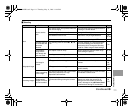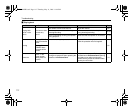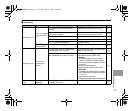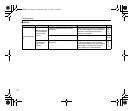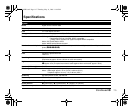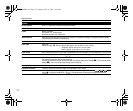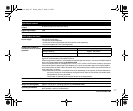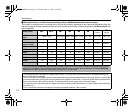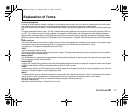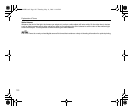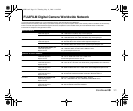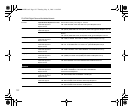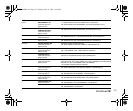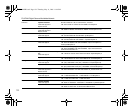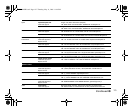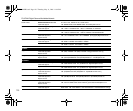
119
Explanation of Terms
Deactivated batteries
Leaving an Ni-MH battery unused in storage for a long period may cause a rise in the level of substances that inhibit current
flow inside the battery and result in a dormant battery. A battery in this state is referred to as deactivated.
Because current flow is inhibited in a deactivated Ni-MH battery, the battery’s original level of performance cannot be achieved.
EV
A number denotes Exposure Value. The EV is determined by the brightness of the subject and sensitivity (speed) of the film
or CCD. The number is larger for bright subjects and smaller for dark subjects. As the brightness of the subject changes, a
digital camera maintains the amount of light hitting the CCD at a constant level by adjusting the aperture and shutter speed.
When the amount of light striking the CCD doubles, the EV increases by 1. Likewise, when the light is halved, the EV decreases
by 1.
Frame rate (fps)
The frame rate refers to the number of images (frames) that are photographed or played back per second. For example, when
10 frames are continuously photographed in a 1-second interval, the frame rate is expressed as 10 fps.
For reference, TV images are displayed at 30 fps (NTSC).
JPEG
Joint Photographic Experts Group
A file format used for compressing and saving color images. The higher the compression rate, the greater the loss of quality in
the decompressed (restored) image.
Memory effect
If an Ni-MH battery is repeatedly charged without first being fully discharged, its performance may drop below its original level.
This is referred to as the “memory effect”.
Motion JPEG
A type of AVI (Audio Video Interleave) file format that handles images and sound as a single file. Images in the file are recorded
in JPEG format. Motion JPEG can be played back by QuickTime 3.0 or later.
Smear
A phenomenon specific to CCDs whereby white streaks appear on the image when there is a very strong light source, such as
the sun or reflected sunlight, in the photography screen.
WAVE
A standard format used on Windows systems for saving audio data. WAVE files have the “.WAV” file extension and the data
can be saved in either compressed or uncompressed format. Uncompressed recording is used on this camera.
WAVE files can be played back on a personal computer using the following software:
Windows: MediaPlayer
Macintosh: QuickTime Player * QuickTime 3.0 or later
Continued Q
SU1840GB.book Page 119 Thursday, May 11, 2006 11:44 PM



